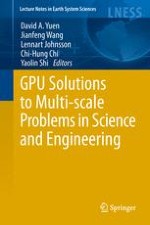2013 | OriginalPaper | Buchkapitel
9. GPU Best Practices for HPC Applications at Industry Scale
verfasst von : Peng Wang, Stan Posey
Erschienen in: GPU Solutions to Multi-scale Problems in Science and Engineering
Verlag: Springer Berlin Heidelberg
Aktivieren Sie unsere intelligente Suche, um passende Fachinhalte oder Patente zu finden.
Wählen Sie Textabschnitte aus um mit Künstlicher Intelligenz passenden Patente zu finden. powered by
Markieren Sie Textabschnitte, um KI-gestützt weitere passende Inhalte zu finden. powered by
